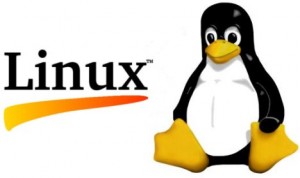Thank you Linus Torvalds!

Linux From Scratch Build Environment
Would you like to build Linux From Scratch but are unsure of the optimum environment in which to do so? If so, then this how-to is for you. I’ll be showing you how to install a customized Slackware Linux virtual machine that you can utilize in your LFS adventure. The advantage of doing this in a VM is that you leave your base OS untouched and can easily revert to prior images or even start again from scratch (no pun intended) if needed. So roll up your sleeves, grab a cup of Joe or a pint, and get ready to get your geek on.
LFS Slackware VirtualBox Appliance
I’ve created an optimized Linux From Scratch build environment using Slackware 14.0 and exported it as an Oracle VirtualBox Appliance to ease installation. The size was kept to minimum (less than 200 MB) and the packages included are as follows:
a packages: aaa_base aaa_elflibs aaa_terminfo bash bin bzip2 coreutils devs dialog e2fsprogs elvis etc findutils gawk glibc-solibs grep gzip kernel-firmware kernel-huge kernel-modules kmod lilo logrotate openssl-solibs patch pkgtools procps sed shadow sharutils sysklogd sysvinit sysvinit-functions sysvinit-scripts tar udev util-linux which xz ap packages: diffutils screen slackpkg texinfo d packages: binutils bison gcc m4 make perl l packages: glibc gmp libmpc mpfr n packages: dhcpcd gnupg iputils net-tools network-scripts openssh wget
You can get the appliance here.
You can get the tagfiles to modify your Slackware ISO and as well as a floppy image with the tagfiles included here.
NOTE: Login as root with password slack
Recovering from a Botched CrunchBang Upgrade
I recently botched an upgrade of the kernel in my CrunchBang VM and it broke the X window system leaving me staring at a black screen after boot. Thankfully it wasn’t terribly difficult to fix. See below for the steps to take to re-apply the upgrades and make the system bootable once again.
When initially booting, CrunchBang shows a Grub menu with the kernel to boot and another option with the same kernel in recovery mode. Choose this second kernel option to log in as root and then run these commands in single-user mode.
First we need to get the network interface up:
# ip link set eth0 up
Next we need to get an IP address using DHCP:
# dhclient eth0
Let’s see how the interface looks now:
# ifconfig eth0
And now we can run the update process again:
# apt-get update # apt-get dist-upgrade
Reboot and it should all just work now:
# shutdown -r now
This is not a cure-all for all booting problems, but for a botched kernel upgrade this did the trick for me!